Eris – The Most Massive Dwarf Planet Discovered (To Date..)
The Distant Eris!
Discovered in 2005, Eris prompted the formation of the new classification of Dwarf Planets and ultimately the demotion of Pluto! Eris orbits beyond Neptune, and the Kuiper Belt, in an area known as the scattered disc and is one of the most distant natural objects in the solar system.
Fast Fun Summary Facts!
- Discovered: January 2005 by a team led by Mike Brown
- Name: Eris - the Greek goddess of strife and discord
- Size: 2,326 km diameter (slightly smaller than Pluto, but more massive)
- Number of Moons: One – Dysnomia (the daughter of the Greek goddess)
- Distance From Sun: Ave of 67.7 AU (varies between 37.9 – 97.7 AU)
- Length of Year: 558 Years
- Surface Temperature: between – 217 and - 243 °C (not much higher than absolute zero!)
- Surface Material: Assumed to be similar to Pluto - mostly rock, volatiles & water ice
Other Interesting Fun Facts About Haumea!
- The discovery of Eris made astronomers question again what exactly constitutes a planet. For a while, Eris was considered to be a potential 10th planet, but after debating and meetings it was termed a dwarf planet along with Pluto, hence it could be argued that Eris, in part, was responsible for the demotion of Pluto to dwarf planet.
- Eris is currently classified as a trans-Neptunian dwarf planet (plutoid) one of the 5 known dwarf planets discovered as of 2017.
- It is also (currently) the furthest dwarf planet from the Sun (three times the distance of Earth to Pluto) to be discovered with Ceres being closest.
- Eris reached its aphelion (furthest point in an orbit) of 97.7 AU in 1977 and is currently moving back towards the Sun reaching its closest point between the years 2256 and 2258!
- Unusually Eris’ orbit is highly inclined being tilted at an angle of 44 degrees to the ecliptic (the plane which the 8 planets orbit in) and is also highly elliptical (egg-shaped).
- It has been calculated that all of the asteroids in the Asteroid Belt would fit within Eris! So it’s no small insignificant little world!
- In fact, Eris is calculated to be slightly smaller than Pluto, but it has a mass 27% greater due to its greater density!
- Scientists believe that when Eris is near its farthest point from the Sun it’s thin volatile atmosphere freezes onto its surface only to thaw hundreds of years later as it approaches the Sun again. What a crazy weird world it must be!
- Eris is the largest object in the solar system not to have been visited by a spacecraft.
- If a spacecraft were to visit and flyby Eris (and depart in 2032 and utilize a Jupiter gravity assist) it would still take 25 years to arrive!
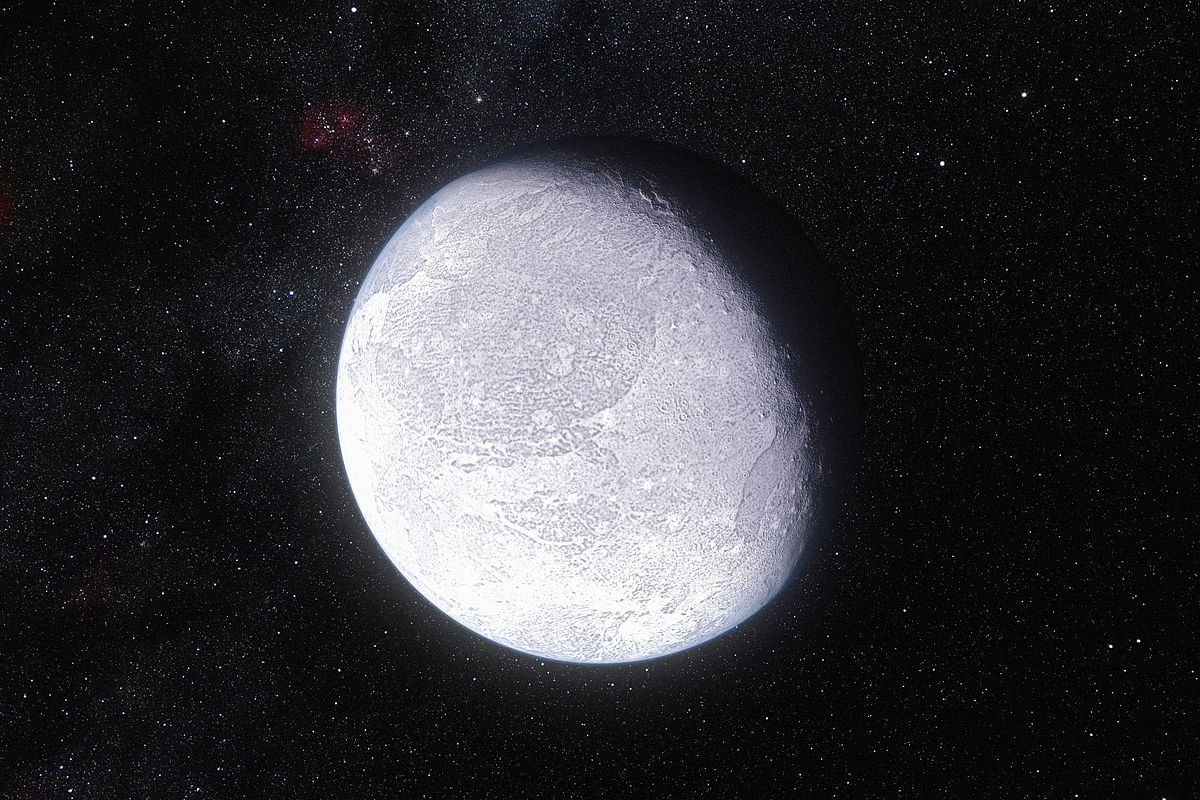
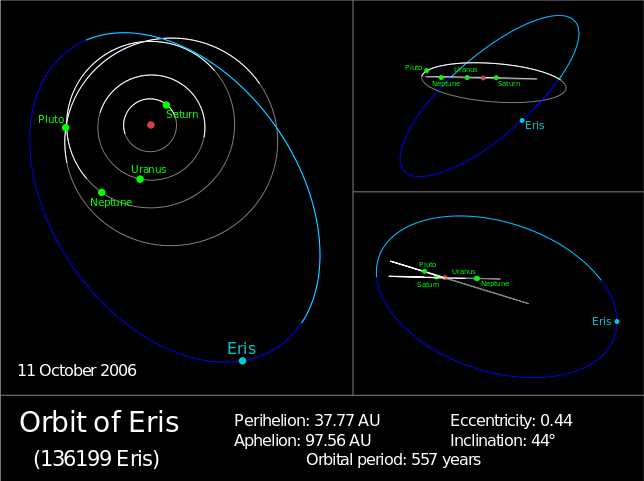
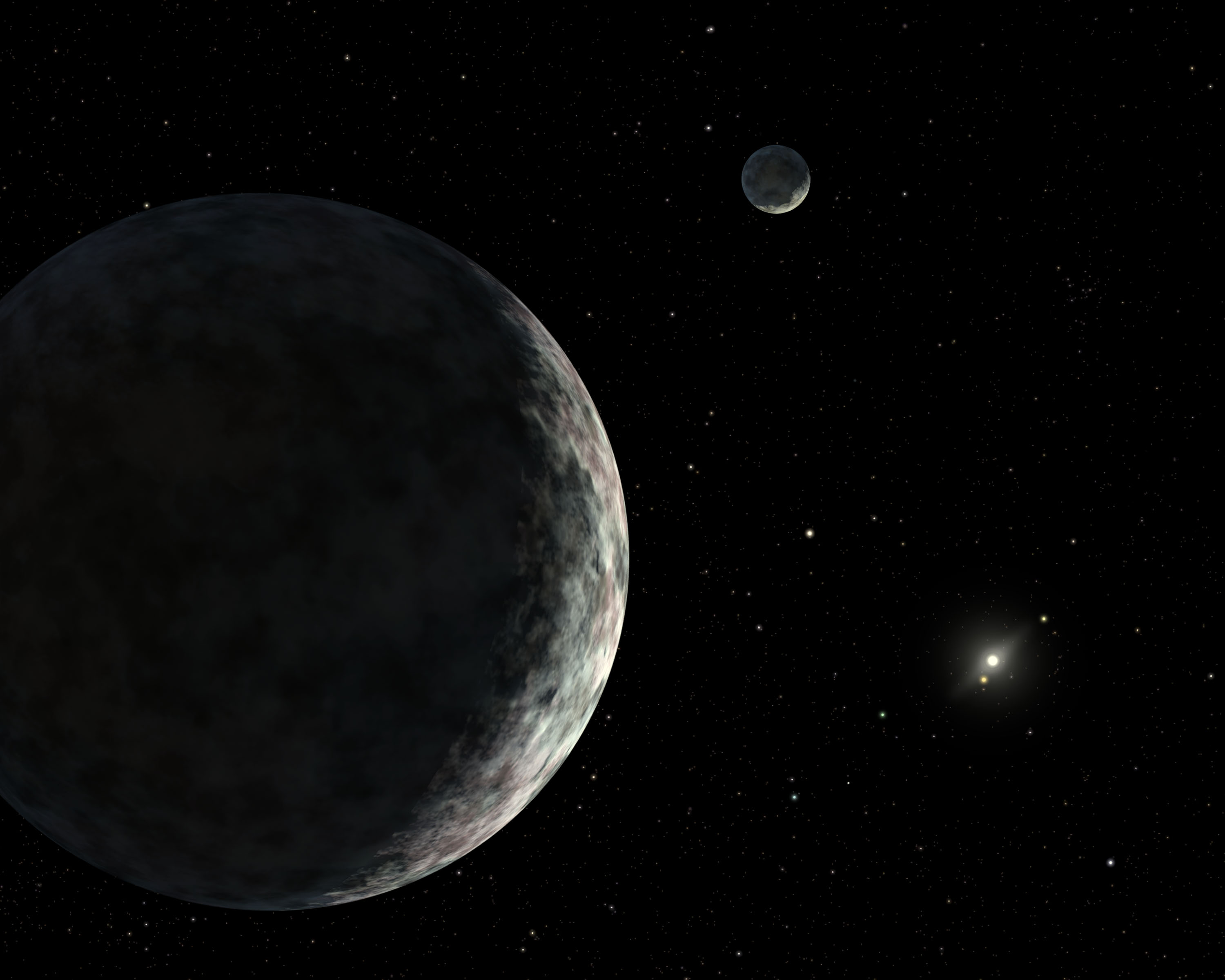
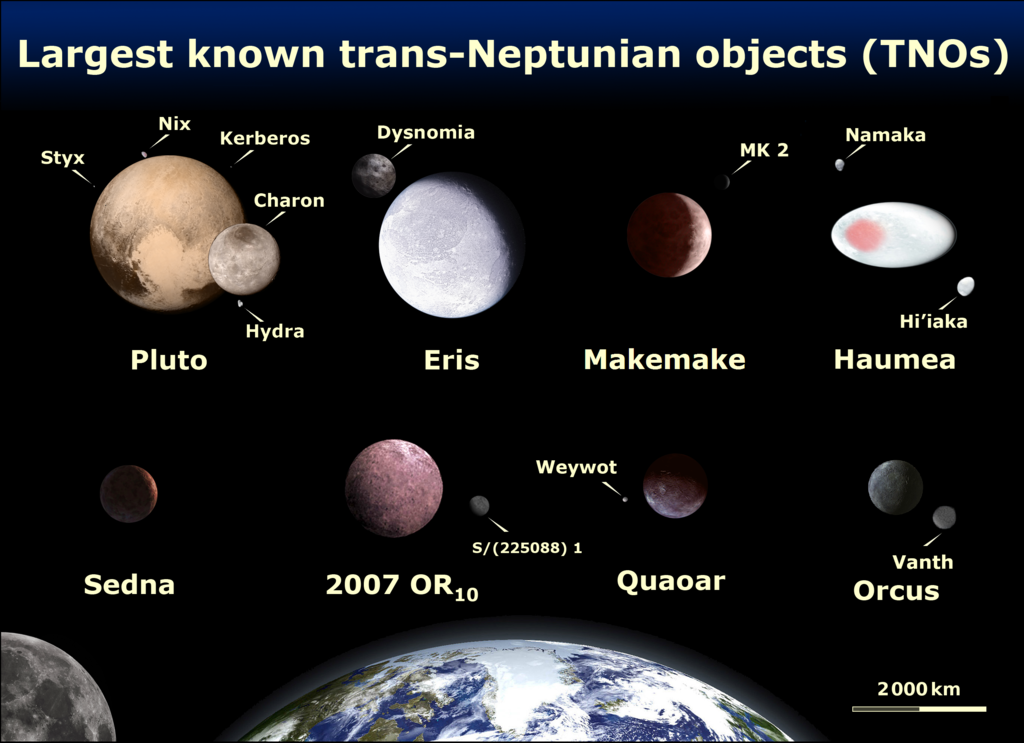
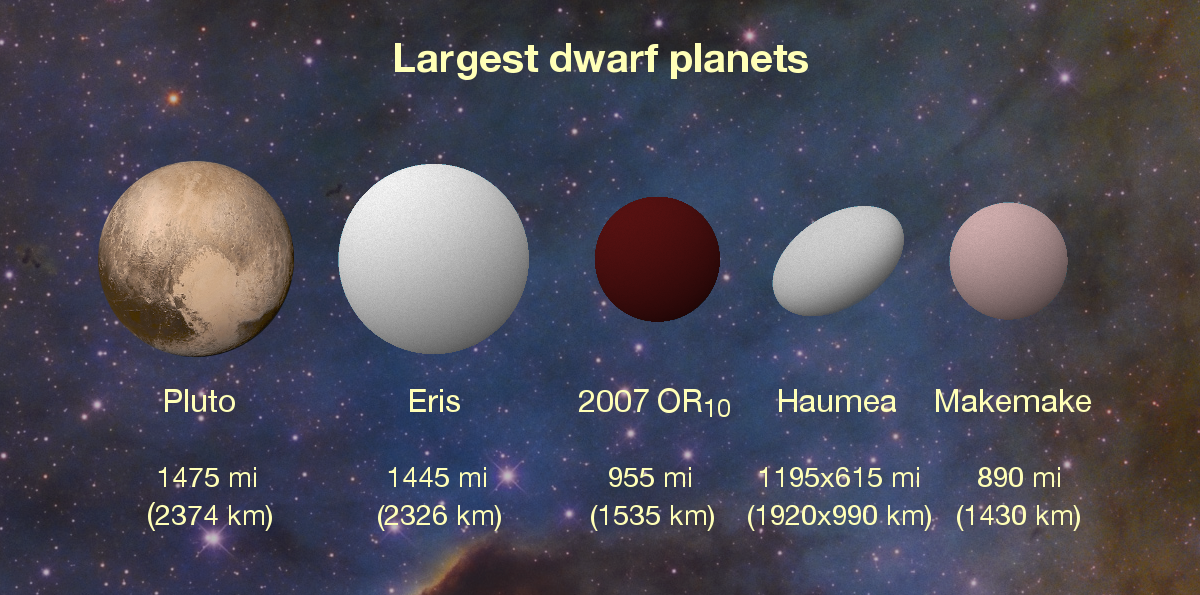
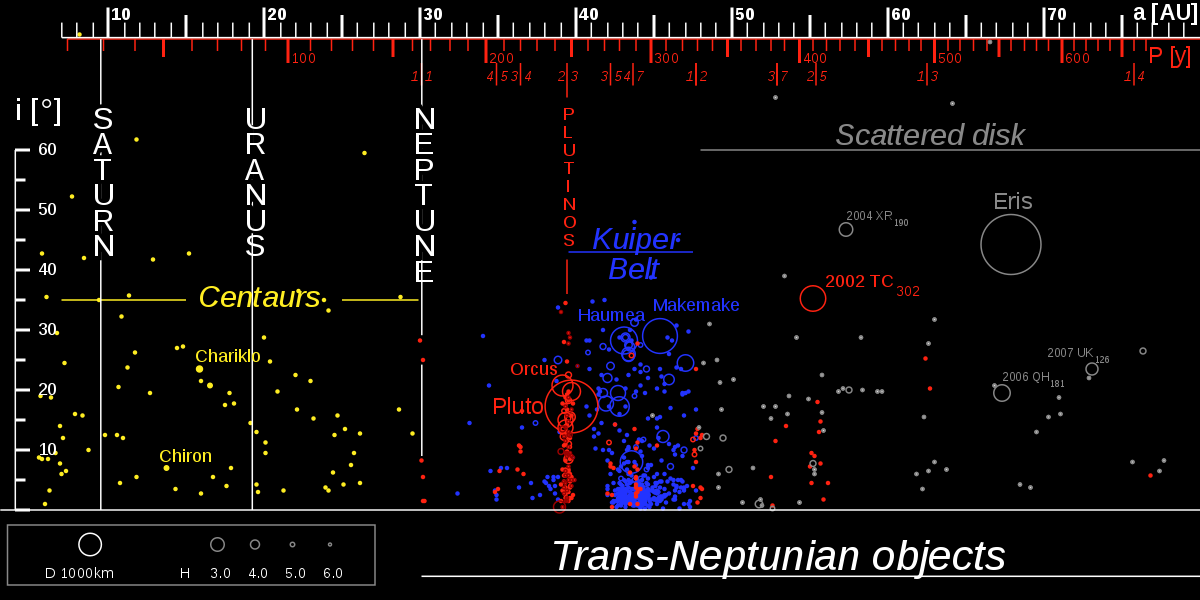
DwarfPlanet Eris
Eris Orbit
Eris and its moon Dysnomia
Trans-Neptunian Objects
Largest known Dwarf Planets
The Trans-neptunian objects




